You don’t have to be miserable on a hot summer day (imagine that!). In this roundup, get 17 ways to stay cooler indoors, despite the sweltering heat.
You’re here reading this because… it’s really hot outside. If you’re lucky, maybe it’s really humid, too. (That was sarcasm, of course.)
Wondering how to stay cool without AC? And what do you do if you have air conditioning but it’s having a hard time keeping up during a heat wave?
We can’t do anything about the weather. (Sorry!) But we do know a thing or two about keeping houses comfortable year round. In fact, depending on where you live, Sealed can help you get home comfort and energy upgrades to make your feel better and cut energy waste year round… and we cover the upfront costs. Tap here to see if you qualify.
Whether you’re living without central air conditioning during the hottest day of the year—or you have AC that’s just not working great—this article is for you.
We’re going to be talking you through how to stay cool indoors… both for those who have AC and those who do not.
In this guide, you’ll cover:
- 9 free (or very low cost) tips for staying cool indoors
- 5 quick short-term fixes to cool off inside (with a little bit of elbow grease required)
- FAQs about how to stay cool on a hot day
- 3 long-term fixes to help your house stay cool
- How to get permanent comfort upgrades at no upfront cost
Key points:
- Short-term solutions like fans and closing the blinds can help keep you cooler inside without AC, but long-term solutions are often necessary.
- Correctly insulating and air sealing your home can help you feel cooler in the summer, help your HVAC system last longer, and cut energy waste.
- Adding whole-house AC to an older home doesn’t have to be invasive, and depending on where you live, you could get it at no upfront cost.
9 free (or super low-cost) ways to stay cool on a hot day
1. Drink lots of cool water—with ice.
This seems like a no-brainer, but it’s essential to stay hydrated during a heat wave, whether you’re indoors or out. Pop a few ice cubes in your water bottle or glass to stay cool.
2. Apply a homemade cold compress to cooling zones on your body.
Although this is a simple trick, it’s effective. Take a cold wash cloth or light cotton towel and wear it around your neck. Use a cloth dipped in cool water on your feet, wrists, or behind your knees to lower your body temperature.
3. Take a cool shower or bath.
Taking a cool shower isn’t just for those of us who finished a tough workout at the gym. If you’re home and you’re having a difficult time keeping cool without AC (or even with the AC on if you have it), skip your regular hot shower or bath and take a cool one instead.
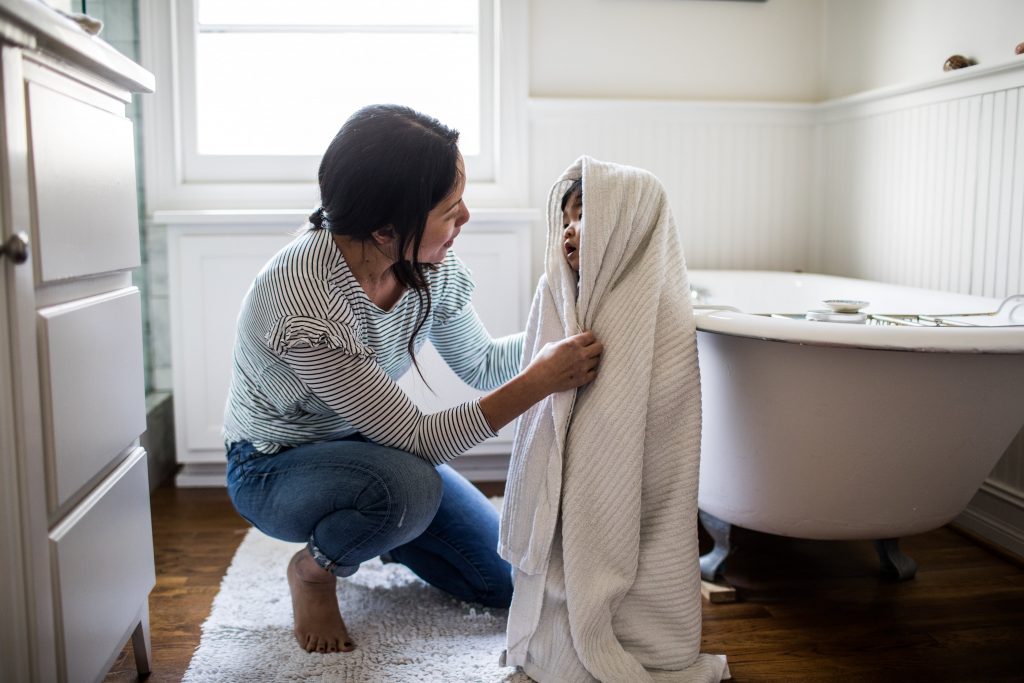
4. Use box fans or portable fans with ice.
Fans can be the unsung heroes of summer. If you don’t have AC, using a portable fan (like a box fan or desk fan) with an ice pack or bowl of ice stationed in front of it can offer a cool breeze in an otherwise hot room.
5. Visit your local library or a public cooling center in your city.
If you just can’t get cool at home, it’s important to play it safe. Spend the hottest parts of the day at a nearby public library with air conditioning or a public cooling center. Many cities offer cooling centers with fans and AC during a heat wave. Check your city’s parks and rec or public health departments to learn more.
6. Get cool at a public splash pad or community pool.
Many communities offer public community pool admission for a low daily rate, or find out if there’s a free public splash pad in your area. (Don’t leave all the summer fun to the kiddos! Pools and splash pads are a great way to get cool on a hot day.)
7. Close blinds and curtains during the heat of the day.
While it seems like common sense, it’s important to close all your windows and doors during the extreme heat of the day. Draw window blinds and close curtains during high-heat times to trap out even more heat.
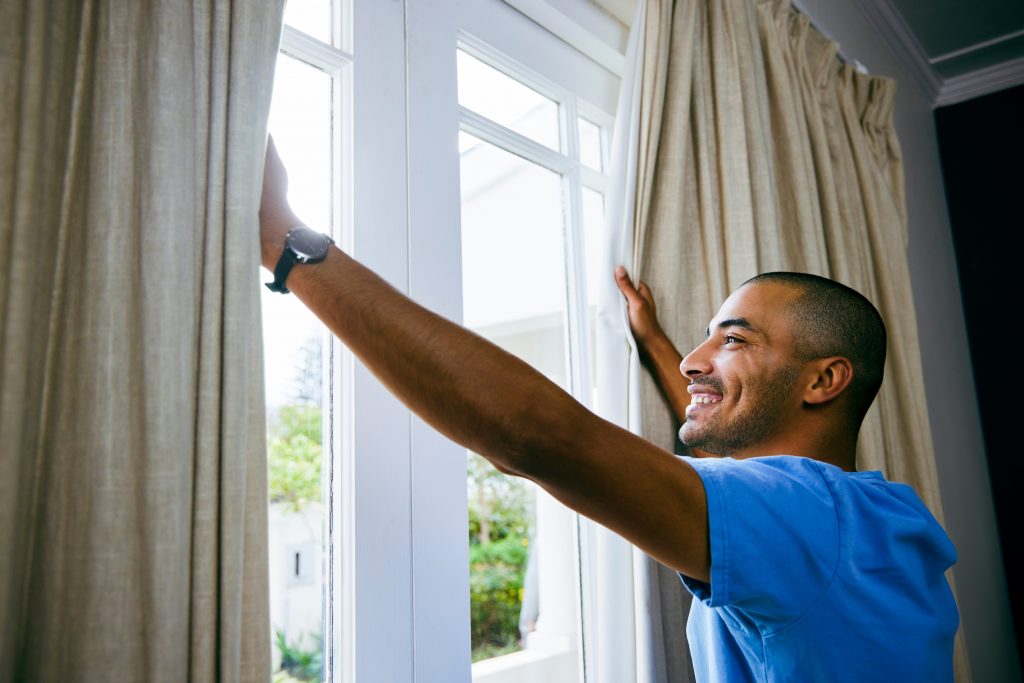
8. Open the windows on cool nights.
If the temperature drops to a comfortable level in the evenings, keep your windows open after sundown to take advantage of the cross breeze and allow fresh, cool air throughout your home. This can be a smart way to invite cool air in at night, and then trap it inside by closing windows and blinds or curtains in the early morning.
9. Place a light cotton bedsheet in the refrigerator or freezer before bedtime.
Have you ever warmed up a blanket in the dryer during winter? This is the same idea. Take a light cotton blanket or bedsheet and cool it off in the refrigerator or freezer before you head to bed. This can help you fall asleep more soundly on hot nights.
So next, let’s dig into short-term quick-fixes that can help lower indoor temperatures throughout your summer.
Higher temperatures and respiratory problems are closely linked. Not to mention, extreme heat can trigger heat stress conditions, like heat stroke.
U.S. Centers for Disease Control and Prevention
5 quick short-term ways to cool off inside
Don’t have air conditioning? The following suggestions below can be done in an afternoon or weekend and can help lower your indoor temperatures on hot days.
And if you do have air conditioning, many of these tips can help keep your AC system from being overworked.
Bonus: Most of these supplies you’ll need for the projects below are readily available at a local hardware or home supply store.
1. Install thermal curtains and blackout shades.
Remember, one of the best ways to block out heat on super hot days is to close any blinds and curtains installed on your windows. Better yet, installing thermal curtains (aka insulated curtains) can actually help insulate your windows against heat in the summer.
Pair that with black out blinds or shades, and you’ve actually created a nice amount of insulation around your window to help you stay cool. Read Do thermal curtains work? to learn why and how insulated curtains can help, along with cost considerations.
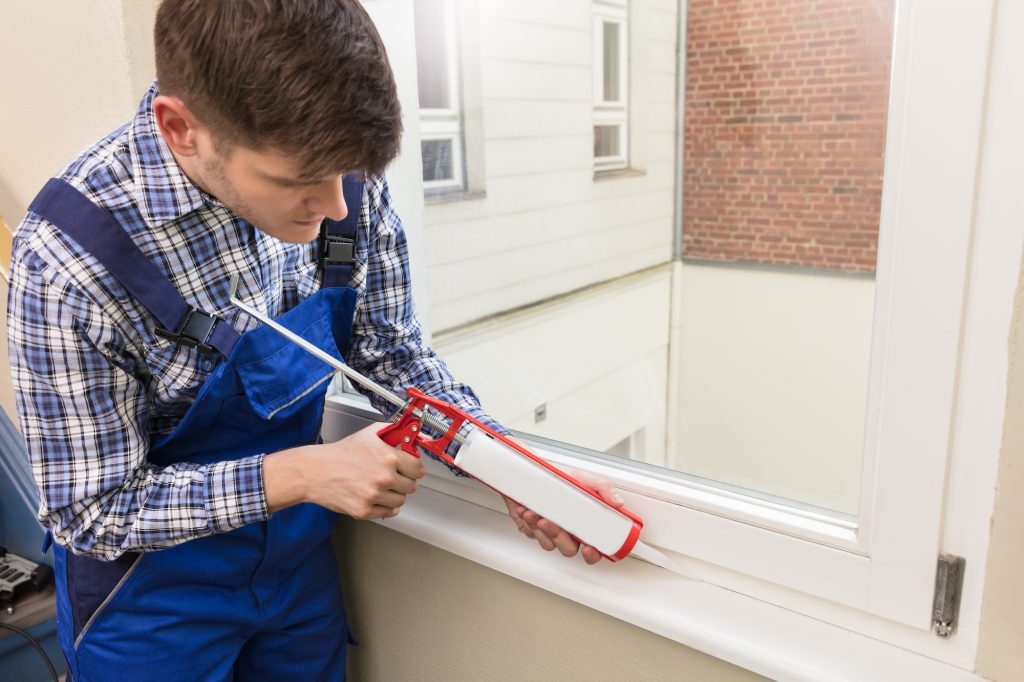
2. Use a caulking gun to seal gaps and seams around your windows.
Caulk is an inexpensive fix that helps close up open gaps around your house. When you haven’t sealed the open gaps and seams around your windows, they can leak in heat in the summer.
(Usually, this is the core fixable issue behind energy waste in your windows… it’s not necessarily that your older windows are causing an uncomfortable house—it’s the air leaks around them.)
If you use a window unit AC, it’s especially important to seal up around open gaps and seams from your window AC install that can cause you to lose the cool air you’re paying to make your house feel better. Discover why air sealing your house can help keep you cool.
3. Purchase weather-stripping supplies or draft stoppers and close up gaps around your doors.
Is there a visible gap (that is, can you see light) around the seams of your doors or windows? Weatherstripping around your doors and windows wears down over time. But thankfully, basic weatherstripping is an inexpensive DIY project that you can do yourself in an afternoon.
And… it works.
Weatherstripping can keep hot air from entering your house through air leaks caused by open gaps and seams, and this can help keep you cooler on really hot days. Learn how to find air leaks in your house here.
You can also buy or make a draft stopper (also called a draft guard) to lay at the foot of exterior doors and remove as needed.
4. Invest in a portable air conditioner or cooling fan to move with you from room to room.
A portable air conditioner could be a good short-term solution if you don’t have air conditioning, or if you have an older AC system that isn’t working correctly. This is usually an appliance you can purchase at a home improvement store the same day you need it, and it’s fairly easy to install yourself.
A portable AC could cost anywhere between $300 to over $800 depending on the size and functions that you need (1). And you’ll be running another appliance in your home, so keep in mind your utilities may increase. Overall, portable and window AC units aren’t the most efficient option.
Alternatively, there are portable cooling fan options that allow you to add in ice packs and ice water. That way, you can get a cooling breeze as soon as you turn on your fan.
Thinking through all your options? Learn about energy-efficient ductless mini split AC and how it works—this permanent solution doesn’t require the hassle of ductwork.
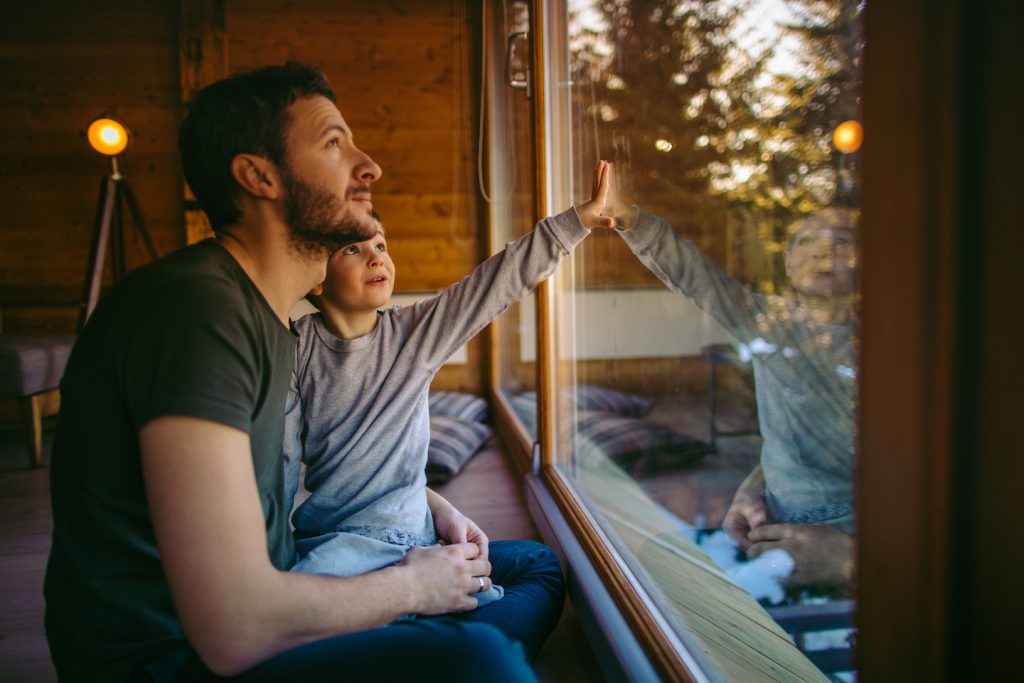
5. Apply a solar reflective film to your windows.
Installing a reflective window film can help reflect heat—or, at least, some heat—from the sun’s rays before they warm up your space. This is a DIY project that you can do in a weekend, but it isn’t exactly a fix-all solution, especially if you don’t have AC.
Solar reflective window film can cost you about $13–15 per window on average. You’ll have more heat reduction by installing thermal curtains and blinds and keeping them closed, but this is one way to reflect some degree of extra heat while enjoying your view of summer skies.
Thinking about putting plastic over windows in your house? This traditional DIY fix doesn’t help much—read Do window insulation kits work? to learn why.
FAQs about how to stay cool on a hot day
Still got questions about staying cool when the summer temps rise? Use the list below to scan through some of the most popular questions we’ve encountered.
- How do you stay cool on a hot day without AC?
- How can I cool down my room fast?
- Do fans actually cool the air?
- Why is it hotter in my room than outside?
- How did people cool off in the old days?
Don’t see your HVAC or insulation-related question here? Call us. Sealed can help!
How do you stay cool on a hot day without AC?
If you live without AC, on hot days you should:
- Drink lots of hydrating fluids.
- Use cold compresses on your wrists, neck, and feet to cool down your body temperature.
- Visit a public library or community cooling center if you’re unable to safely stay cool at home.
Tap here to read our full list of tips.

How can I cool down my room fast?
If you need to cool down a hot, stuffy room quickly, use portable fans with bowls of ice or ice packs in front of them. If the temperature outside is cooler than your room feels, open a window to allow for fresh air to circulate through the room.
Final tip: If you have access to a portable air conditioning unit or cooling fan, place it in the room you’re attempting to cool and vent it outside the window if needed.
To cool a room fast, place a portable fan or AC unit in your room vent it outside the window if possible (and only if you’re not pulling more heat into your room).
Do fans actually cool the air?
Fans (both installed ceiling fans and portable fans) don’t actually cool the air in your house. They make for great air circulators, though, and create a breeze to make your room feel better.
If fans don’t cool the air, why have we mentioned them so much in this article? Fans do an excellent job of moving air across your body, which can help you feel cooler on hot days. They also can help pull hot air out of your house.
However, if your room is very hot and humid and you don’t have a way to cool down your room by removing heat and humidity first, a fan might actually make you feel even warmer… and then it isn’t exactly a smart thing to use (2).
Why is it hotter in my room than outside?
If you’ve got a room that’s hotter than the outdoors, it’s likely you have poor insulation or ventilation issues in your house. This can make your home really uncomfortable, and you’ve probably noticed uneven temps year round.
This is a larger whole-house issue—and the permanent fix is upgraded insulation and professional air sealing.
At Sealed, we can help create a customized plan to fix uncomfortable indoor temperatures for good. Learn more.
How did people cool off in the old days?
Okay, so humans have lived without AC for a long, long time. Pre-air conditioning, people used to cook during cooler parts of the day, keep windows and doors shut during high-heat, run fans with ice in front of them, and go swimming to escape the summer heat.
All of these things can help present-day folks with internet access (like us) stay cool on hot days, too, with or without AC.
But the truth is, we live in modern times… and there are modern, energy-efficient upgrades that can keep you feeling comfortable—even on the hottest of days—no matter what year your house was built.
Summers are getting hotter and electricity bills and energy costs are rising, but there are home upgrades that can combat both. And you should know about them.
3 Long-term fixes to help your house stay cool
If you’re a homeowner (or would like to be one day!) here are three long-term fixes you need to know about that can help your home stay comfortable year round and waste less energy:
At Sealed, we can help you get all of these upgrades at no upfront cost if your home qualifies.
We’re on a mission to help your home feel better year round and waste less energy.
And we believe in the power of these 3 home upgrades so much that we guarantee the work—and you pay for the work done with a flexible payment option that works best for you and your budget.
Want to learn more? See if your house qualifies.
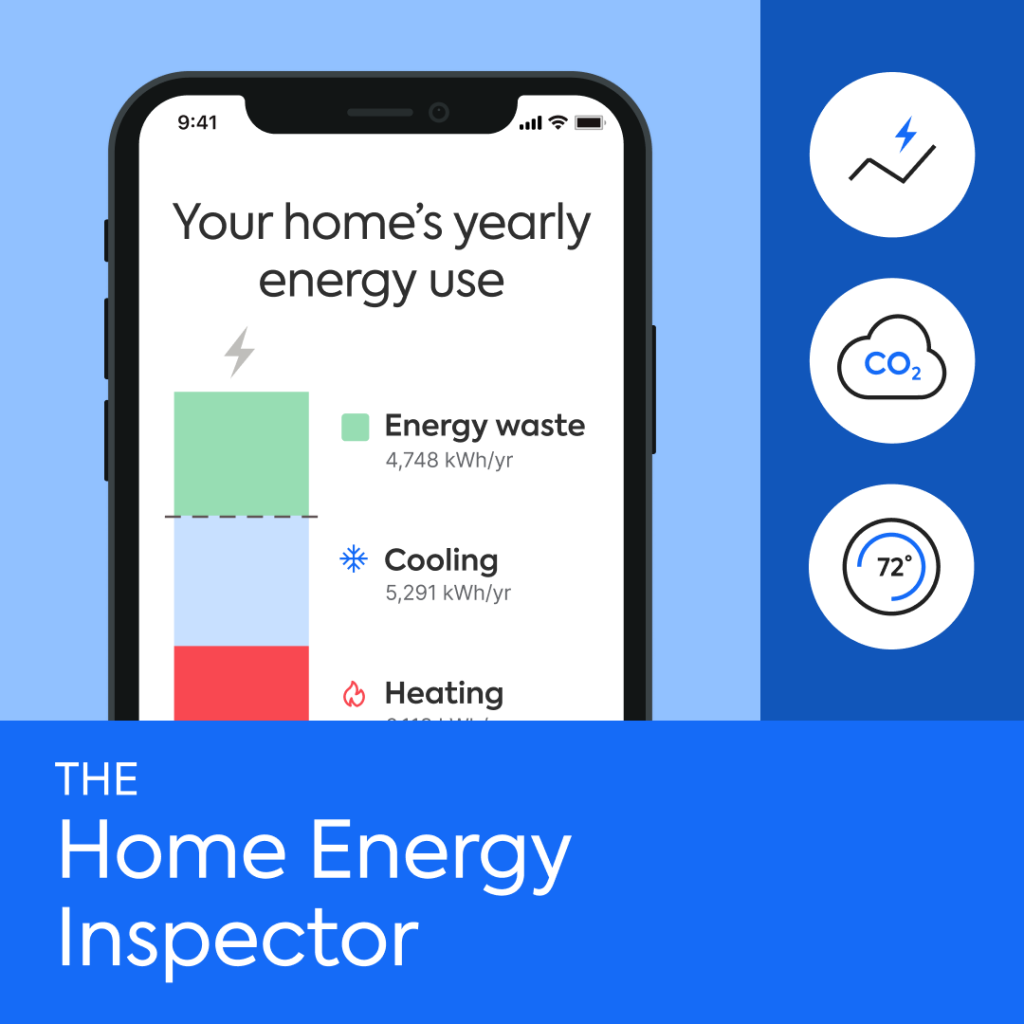
Ready to crunch the numbers?
Check out our home energy usage calculator to see where you could cut energy waste BIG TIME.